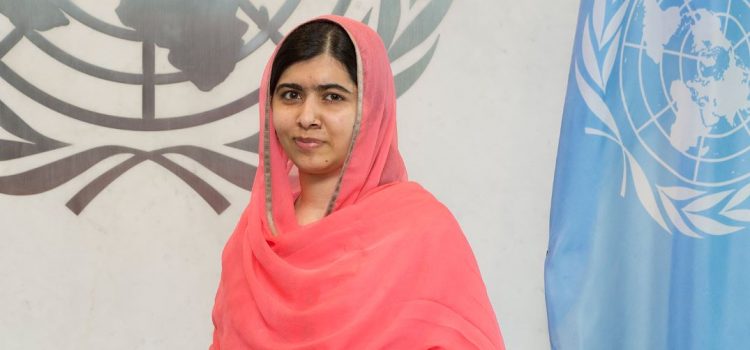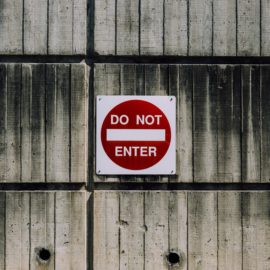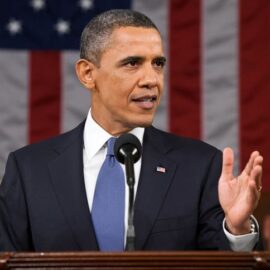

This article is an excerpt from the Shortform book guide to "I Am Malala" by Malala Yousafzai. Shortform has the world's best summaries and analyses of books you should be reading.
Like this article? Sign up for a free trial here.
How did Malala Yousafzai survive being shot? What was her recovery like? What did she do after she left Pakistan?
On October 9, 2012, a Taliban gunman shot Malala Yousafzai in the face when she was on her way home from school. Miraculously, she survived. In her autobiography, she discusses her recovery and what she’s done since.
Keep reading to learn about Malala after the shooting that nearly took her life and silenced her voice.
Image source: UN Photo/Eskinder Debebe
The Shooting of Malala and the Aftermath
Malala was riding the bus home from school with 19 other girls when Taliban soldiers pulled them over. A man asked for her by name, then shot her in the face point-blank. The bullet went through her left eye socket, exited her head, and lodged in her shoulder, narrowly missing her brain. The Taliban later claimed responsibility for shooting Malala. They said they had done it, not because of her fight for girls’ education, but because she supported Western, secular ideas.
According to Malala, after the shooting, she was rushed to a series of hospitals where doctors operated on her to remove the bullet and relieve life-threatening swelling in her brain. She suffered complications after the operations and was transferred to a hospital in Birmingham, England.
Malala’s family had trouble getting out of Pakistan to join her, so, for her first 10 days at the English hospital, she was alone. When she regained consciousness in Birmingham, she had no idea what had happened, where she was, or why her vision and hearing on her left side weren’t working and her thoughts were muddled. She couldn’t speak, so she wrote basic phrases in English on a notepad. She couldn’t walk properly. Slowly, she regained her speech and practiced walking.
When Malala was reunited with her family, everyone released the emotions they had been holding in and cried. Malala’s family was distraught to see that the left side of her face was paralyzed, and she couldn’t smile. Doctors operated to repair Malala’s damaged facial nerve; after three months, movement slowly began returning to her face.
(Shortform note: While Malala started on the road to recovery following her stay in the Birmingham hospital, healing from the shooting would take at least nine years and six surgeries, including three additional surgeries to repair her facial paralysis in 2018, 2019, and 2021. When she was recovering in Boston from the third surgery on her face, she heard the news of the Taliban retaking Afghanistan. She noted on social media that millions of Afghan people had taken a bullet at the hands of the Taliban, just as she had.)
Malala Continued Her Fight for Girls’ Education From Her New Home in England
The Pakistani government rented an apartment in Birmingham for Malala’s family to stay in while she recovered. They paid for her medical care and gave her father a position as education attaché to the Pakistan high commissioner in London.
Six months after the attack, Malala was well enough to start school in Birmingham. Malala liked England, but she missed home. She couldn’t return, however, because it was still dangerous for girls to get an education in Pakistan. Schools were still being bombed and girls killed.
(Shortform note: After the Pakistani army retook the Swat Valley from the Taliban in 2009, some degree of peace returned to the area. But, as Malala points out, the Taliban attacks continued—including their attack on Malala herself. Arguably to guard against another Taliban takeover, the Pakistani military has remained in Swat since 2009. Sporadic Taliban attacks have continued and, following the Afghan Taliban’s takeover of Kabul in the summer of 2021, the Pakistani Taliban in Swat began regrouping. In addition to other attacks, the Pakistani Taliban attacked a school van in 2022 on the 10th anniversary of Malala’s shooting, killing the driver and injuring students.)
On Malala’s 16th birthday, she gave a speech about girls’ education at the UN in New York. She wrote the speech not just for the UN delegates, but for people all over the world whom she hoped to inspire.
She also founded the Malala Fund, which works to ensure that girls around the world receive an education. She went to Kenya to build a school and to Nigeria to show solidarity with schoolgirls abducted by militants. She went to the White House to discuss girls’ education with US President Barack Obama. She told the president that instead of trying to root out terrorism through war, the US should work to eliminate terrorism through education.
| Methods for Combating Terrorism Malala’s message to President Obama echoes the conclusions of many experts on combating and preventing violent extremism. These experts say that while counter-terrorism has long focused on military and security operations, these approaches are not enough to exterminate terrorist groups that are now active in approximately two-thirds of the world. They argue that governments must focus on the roots of violent extremism: poverty and inequality; lack of education; marginalization and discrimination, including against girls and women; and poor governance, including state violation of human rights and the rule of law. The best way to prevent terrorism, these experts argue, is to create societies that respect human rights and provide economic opportunities for all. |

———End of Preview———
Like what you just read? Read the rest of the world's best book summary and analysis of Malala Yousafzai's "I Am Malala" at Shortform.
Here's what you'll find in our full I Am Malala summary:
- Malala Yousafzai's autobiography about growing up in a society where women lack rights
- A look at Yousafzai's origins in poverty to her campaign for girls’ education
- How she survived getting shot at point-blank by the Taliban







Malala Yousafzai i feel you keep on going without you i won’t be going to school . I love you 💗💓❤️💞💝💖💕💘❣️